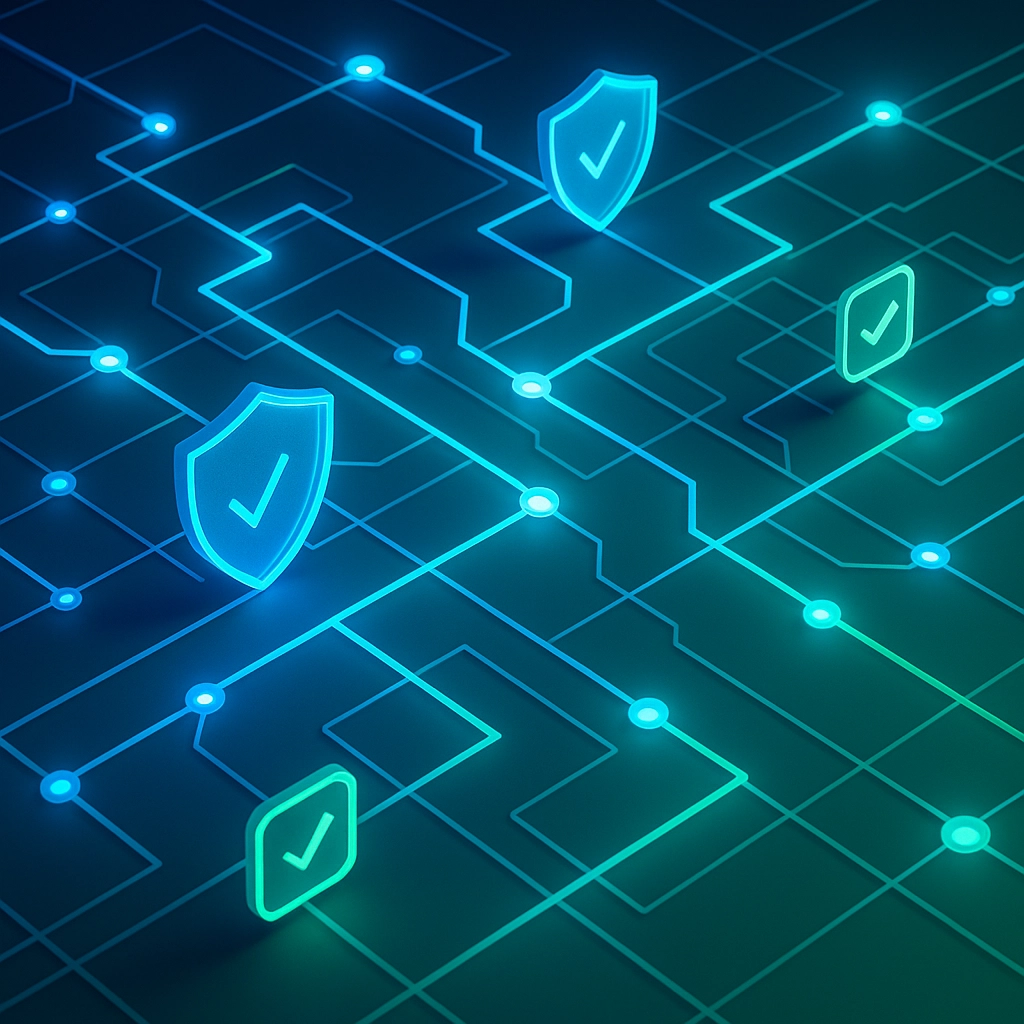The Ultimate Guide to Zero Trust Security: Everything Chicago SMBs Need to Succeed
- Jahmar Childs
- Aug 27
- 5 min read
Chicago's business landscape is evolving fast, and so are the cyber threats targeting small and medium-sized businesses. If you're running a company in the Windy City, Lake County, or surrounding areas, you've probably heard about Zero Trust security—but what does it actually mean for your business?
Here's the thing: traditional security models are like having a bouncer at your front door but letting anyone who gets inside roam freely through your entire building. Zero Trust flips that script completely. It's the "trust no one, verify everyone" approach that's becoming essential for modern businesses.
At Vertex Tech Management, our veteran-led team has seen firsthand how this military-inspired approach can transform business security. Let's break down everything you need to know about Zero Trust and how to implement it successfully in your Chicago SMB.
What Is Zero Trust Security? (And Why Your Business Needs It)
Zero Trust isn't just another buzzword—it's a complete mindset shift. Instead of assuming everyone inside your network is trustworthy, Zero Trust operates on three core principles:
Never trust, always verify: Every user and device must prove they belong, every single time
Least privilege access: Give people only the minimum access they need to do their job
Continuous monitoring: Keep watching for suspicious activity, even after someone's logged in
Think of it like this: instead of giving everyone a master key to your office building, you give each person specific access cards that only open the doors they need, and you track every swipe.
Why Chicago SMBs Are Making the Switch
The numbers don't lie—cyberattacks on small businesses have skyrocketed, with 43% targeting SMBs specifically. Here in the Chicago metro area, we've seen businesses from Schaumburg to Naperville fall victim to everything from ransomware to data breaches.
The reality check:
Traditional perimeter security fails when employees work from home (hello, hybrid work culture)
Cloud adoption has dissolved the old "network boundary"
Insider threats account for 34% of all data breaches
The average cost of a data breach for SMBs is now $2.98 million
Zero Trust addresses these challenges head-on by treating every access request as potentially hostile—whether it's coming from inside or outside your network.

The Core Components: Building Your Zero Trust Foundation
1. Identity and Access Management (IAM)
This is your first line of defense. Every user needs:
Multi-factor authentication (MFA): At minimum, something they know (password) plus something they have (phone)
Role-based access controls: Sales team can't access HR files, period
Regular access reviews: Clean up old accounts and unused permissions
2. Device Security and Endpoint Protection
Every laptop, tablet, and smartphone becomes a potential entry point. You need:
Endpoint detection and response (EDR) tools
Device compliance policies
Regular security updates and patches
Device registration and monitoring
3. Network Segmentation
Break your network into smaller, controlled zones:
Separate guest Wi-Fi from business systems
Isolate sensitive data in secure segments
Control traffic flow between network areas
Monitor all network communications
4. Data Protection and Classification
Not all data is created equal. Classify and protect based on sensitivity:
Public: Marketing materials, published content
Internal: Employee directories, policies
Confidential: Financial data, customer information
Restricted: Legal documents, trade secrets
Your Zero Trust Implementation Roadmap
Phase 1: Assessment and Planning (Weeks 1-2)
Start with a security audit:
Map all your current systems and data
Identify your most critical assets
Document current security gaps
Create a prioritized implementation plan
Pro tip from our veteran-led approach: Just like in military operations, intelligence gathering comes first. You can't defend what you don't understand.
Phase 2: Quick Wins (Weeks 3-6)
Implement high-impact, low-effort changes:
Enable MFA on all accounts (this alone prevents 99.9% of automated attacks)
Update and standardize password policies
Remove unnecessary user accounts and permissions
Set up basic logging and monitoring
Phase 3: Network Hardening (Weeks 7-12)
Strengthen your network infrastructure:
Deploy network segmentation
Implement endpoint protection
Set up network monitoring tools
Create incident response procedures
Phase 4: Advanced Protection (Months 4-6)
Add sophisticated security layers:
Deploy behavioral analytics
Implement data loss prevention (DLP)
Set up automated threat response
Conduct regular security testing

Common Zero Trust Mistakes (And How to Avoid Them)
Mistake #1: Trying to Do Everything at Once
The fix: Start small and build incrementally. Rome wasn't built in a day, and neither is a Zero Trust architecture.
Mistake #2: Ignoring User Experience
The fix: Balance security with usability. If security is too cumbersome, employees will find workarounds that make you less secure.
Mistake #3: Forgetting About Legacy Systems
The fix: Don't abandon older systems—find ways to integrate them securely or plan for replacement.
Mistake #4: Set-It-and-Forget-It Mentality
The fix: Zero Trust requires continuous monitoring and adjustment. It's not a one-time project.
Zero Trust on a Budget: SMB-Friendly Solutions
We get it—you're not a Fortune 500 company with unlimited resources. Here's how to implement Zero Trust cost-effectively:
Free and Low-Cost Tools:
Microsoft's built-in MFA capabilities
Google Workspace security features
Open-source monitoring solutions
Cloud-based security services with pay-as-you-scale pricing
Managed Security Services: Instead of hiring a full security team, partner with a veteran-led MSP that understands both military precision and business needs.
Measuring Success: Zero Trust KPIs for SMBs
Track these metrics to ensure your Zero Trust implementation is working:
Security incidents: Should decrease over time
Time to detect threats: Faster is better
User access violations: Should trend downward
Compliance scores: Monitor regulatory adherence
Employee security awareness: Regular training assessments

The Chicago Advantage: Local Zero Trust Support
Working with a local, veteran-led IT services company offers unique advantages:
Face-to-face support: Sometimes you need someone on-site
Understanding of local business needs: We know the Chicago market
Quick response times: No waiting for support from across the country
Military-grade discipline: Systematic, thorough approach to security
Real-World Success Stories
We've helped Chicago-area businesses across industries implement Zero Trust:
A Lake County law firm reduced security incidents by 85% after implementing Zero Trust
A Schaumburg manufacturing company prevented a ransomware attack that could have cost $500K+
A downtown Chicago accounting firm achieved SOC 2 compliance faster with Zero Trust foundations
Making the Business Case for Zero Trust
When presenting Zero Trust to leadership, focus on business impact:
Cost Savings:
Reduced insurance premiums
Fewer security incidents
Improved productivity
Better regulatory compliance
Competitive Advantages:
Enhanced customer trust
Better vendor relationships
Improved employee satisfaction
Future-proofed security posture
Next Steps: Your Zero Trust Journey Starts Here
Zero Trust isn't just about technology—it's about creating a culture of security that protects your business, your customers, and your future. Whether you're a 10-person startup in Evanston or a 100-employee company in Naperville, the time to act is now.
Remember, cybercriminals don't care about your company size—they care about easy targets. Don't be one.
Ready to transform your security posture with Zero Trust? Our veteran-led team at Vertex Tech Management brings military precision to civilian cybersecurity challenges. We've helped dozens of Chicago-area SMBs implement Zero Trust successfully, and we're ready to help you too.
Schedule your FREE IT Health Check today and discover exactly where your security stands. We'll provide a comprehensive assessment, identify your biggest risks, and create a customized Zero Trust roadmap that fits your budget and business needs.
Don't wait until it's too late. Your business, your customers, and your peace of mind are worth protecting.
Comments